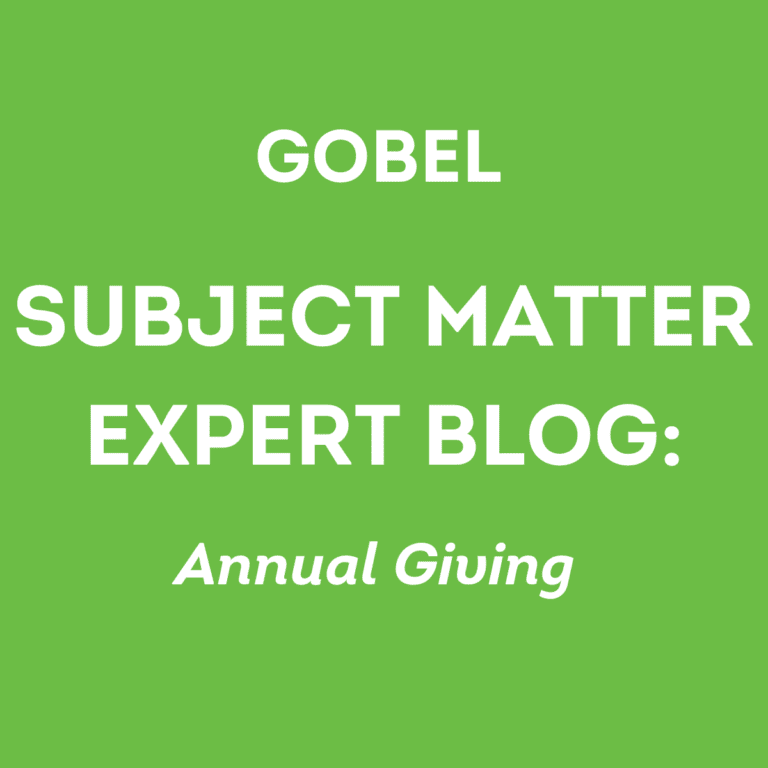
Omni-channel fundraising: a symphony of giving
By Ann Fisher
Director of Annual Giving, Leadership Annual Giving and Data Services, Michigan Medicine
While the sound of a single musical instrument is lovely, there is something special about an orchestra of instruments playing in unison. The song is amplified by the collective effort, and it resonates more intensely with the audience.
The same is true for annual giving appeals. Often, we send a mailing or email, or even make a phone call, and hope that our single message is sufficient to get the attention of our audience – and hopefully trigger a gift. Our donors and prospective donors are remarkably busy people with hectic lives. They are also constantly bombarded by the marketing efforts of many other for-profit and non-profit businesses and organizations vying for their discretionary income. If you want to capture their attention, your shop must integrate all your giving channels into a cohesive plan that conveys consistent messaging about why they should give to your organization.
Decades ago, annual giving programs typically relied on one channel, mostly mail. Larger programs, particularly academic organizations, utilized phone calling centers to spur giving, but often one channel was dominant, and most of the time and resources for annual giving programs went to the dominant channel. Then the industry began to realize the flaw of this practice. Certain donors only gave via a particular channel, and if a shop did not use that channel, they could not engage them. Other donors sometimes needed more than one touchpoint to receive and react to the messaging. It was also common to find that using various channels helped organizations to better manage costs since some channels are more expensive than others.
Thus, “multi-channel” became the buzzword in annual giving. Annual giving teams began to develop and implement plans that included the various channels of giving — email, phone, and mail. That has grown to include text and social media, as well. By using this broader strategy, organizations were able to better broadcast their message and use all the tools available to them. During this time, many programs saw increases in dollars and donors. Perfect right? Not quite.
Just like an orchestra, annual giving works best when each piece is doing its part to contribute to the whole rather than having each piece working independently. That sounds great, but it is easy to say and harder to implement. Small shops are often limited by staffing and budget. Larger organizations often find it hard to synchronize all their channels and messaging with so much to do. So, what are the ways to take your program from multi-channel to omni-channel, incorporating all available marketing streams?
- Start with your messaging and design. A hallmark of successful omni-channel plans is cohesiveness. Do your online appeals share the same look and feel as your mailings? Are your callers sharing the same messages that are in your appeals? Consistently using the same look and key wording is important to amplifying the message to your prospective donors. If everything looks and sounds different, potential donors are less likely to retain your message.
- Start small. If you are not currently taking the omni-channel approach, you do not need to add it to all your annual efforts at once. Think about your organization’s main fundraising efforts and start building multi-channel campaigns around them first. For example, if you have a great fall mailing, focus on that effort. Add a lead email before your mailing drops and run a social media ad starting on the drop date for a few weeks. Strategically time any phone calling toward the end of the mail response period, so callers aren’t getting a lot of “gave in the mail” responses. Don’t have a phone program but have text messaging? Use that to circle back to donors who did not respond to your other efforts to give them yet another opportunity to make a gift.
- Think outside the box. Days of giving are online only, right? Not necessarily. Paid callers calling around and on giving days can boost your giving day results, and giving days are a great message for callers to share. And yes, you can mail for giving days, too. Not all donors want to give online. Many of your most loyal donors give via mail, so you don’t want to leave them out. Segment your “mail only” donors and send them a giving day mailing so they can participate too.
By utilizing these strategies, you can take your annual giving programs from multi- channel to omni-channel and achieve a symphony of successful fundraising for your organization.
ABOUT GOBEL SUBJECT MATTER EXPERTS: GOBEL Subject Matter Experts are healthcare philanthropy professionals working in some of the top shops in the country, sharing best practices and insights. For more information about GOBEL’s Subject Matter Expert program, or to suggest a topic for coverage, email erezsnyak@gobelgroup.com.
ABOUT THE AUTHOR: Ann Fisher is a fundraising professional with more than 25 years of experience in annual giving. Ann began her career at Hospice of Michigan, where she developed numerous skills from database management to grant and appeals writing. From there she moved on to University of Detroit Mercy where she spend nearly 20 years in annual giving, eventually becoming Executive Director of Annual Giving and Data Services. During her time at Detroit Mercy, Ann was instrumental in introducing new initiatives like online giving and crowdfunding, while also improving the ROI in phone and mail and coordinating the University’s President’s Cabinet leadership giving program. Ann then spent two years at UC San Diego as Senior Director of Integrated Marketing, where she launched its first Day of Giving and restarted the grateful patient giving program. Ann currently works at Michigan Medicine where she serves as Director of Annual Giving, Leadership Annual Giving and Data Services. In 2021 Ann and her colleagues were selected as CASE Platinum Award Finalists in the Best Practices in Fundraising Award for their Nurses Week Campaign, which raised more than $80,000 from 1,300 donors during the height of the pandemic. She has also served as a judge for the CASE Circle of Excellence Awards. In her spare time, Ann is an avid runner and has run several half and full marathons as a charity runner to raise money for various causes.

